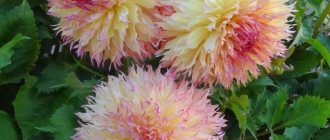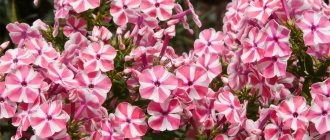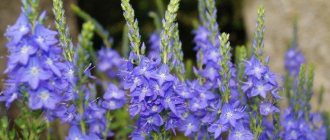Botanical description
All representatives of the daisy genus have a weak but characteristic odor . The plant is widely used in folk and traditional medicine because it has antiseptic and anti-inflammatory properties. In addition, the plant can be used in landscape design and for arranging bouquets of wildflowers.
The classification of chamomile is still not streamlined . There are several systems for its description, each of which considers several dozen species of this plant. The most popular type of chamomile is Chamomile. It is this species that has the most pronounced medicinal properties.
Sometimes daisies are also called other plants that are similar in appearance to this flower. These include pyrethrum, cornflower, as well as some types of asters and chrysanthemums. And, although from a botanical point of view this is not true, all these plants are grown in approximately the same way as ordinary chamomile.
pharmaceutical camomile
Chamomile is a low herbaceous perennial plant with pinnate, dissected leaves.
The chamomile inflorescence is a semicircular basket containing several hundred small flowers. The diameter of the inflorescences ranges from 5 to 20 mm. Their center is yellow or yellow-orange in color, the outer leaves are almost always white. The structure of the inflorescence is quite interesting: in the center there are bisexual flowers, at the edges there are only flowers with pistils.
Chamomile inflorescence
Flowering begins quite early . Usually, the first inflorescences appear at the very beginning of spring, in warm areas sometimes as early as early March. Since flowering does not occur simultaneously, blooming daisies can be found even in one area throughout the entire season - from early March to late October. Peak flowering occurs between May and July. Pollination is carried out by wasps or bees.
The fruits of the plant are achenes with a pappus . Fruit ripening occurs within 1-1.5 months after the end of flowering.
Chamomile is grown to produce pharmaceutical raw materials, primarily essential oils and azulene . For this purpose, the inflorescences and tops of the plant are collected.
Description of chamomile
Chamomile is a herbaceous annual plant, up to 60 cm in height, with a ribbed-furrowed erect stem, sessile alternate leaves, white marginal flowers collected in baskets and oblong fruits in the form of curved greenish achenes.
The plant blooms almost all summer, usually bears fruit in August; flower baskets are used in medicine, which are harvested during their full bloom during the period when lingual flowers usually take a horizontal position.
Planting chamomile
General issues
Chamomile can be grown either by direct planting in the ground or by seedlings. If you don’t want to tinker with seedlings, you can simply sow chamomile seeds in open ground, however, the quality of the resulting plants will not be very good.
Chamomile seeds
The germination rate of the seeds will not be very high, in addition, the planting will be uneven. Over time, the plant will spread over the entire area of the site, however, the time spent on bringing it into relative order will be comparable to growing seedlings.
The plant does not like excessive thickening; It’s better to plant it evenly right away. That is why the seedling method of growing chamomile is more preferable.
Site preparation
Usually, the area for chamomile is prepared before directly planting seeds or plants in the ground. There is no need to prepare it six months before planting. For daisies, you will need a sunny area with soil of normal acidity or close to it. It can also be grown on slightly alkaline soils.
Strongly acidic soils require liming with wood ash ; its application rates depend on the acidity level of the soil, but in the vast majority of cases it is enough to add wood ash at the rate of 200 g per 1 sq. m. m.
Chamomile in early spring
The root system of the plant can spread quite deep, so for growing daisies, soils with a groundwater level of at least 1 m are recommended.
The area must be dug to a depth of 30 cm, loosened and leveled, removing plant debris. After which you should apply complex fertilizer for flowers in the concentration recommended by the manufacturer. At this point, site preparation can be considered complete.
Planting in open ground
Seeds are planted directly in open ground at the end of May or at the end of September. The seeds are evenly distributed over the surface and sprinkled with a very thin layer of crushed soil.
Chamomile seedlings in open ground before thinning
After planting in the spring, the site needs regular watering. Seeds germinate in about 1-2 weeks. As they germinate, it will be clear what to do next with the young seedlings - whether or not they will have to be replanted in empty areas. It is best to do this when 4-5 leaves appear on young plants.
If planting was done in the fall, then one watering will be enough for the seeds; They will sprout anyway only next spring.
Seedling planting method
Seedlings are planted at the end of March. It is best to grow chamomile seedlings in a tray with 4x4 or 5x5 cm cells. But you can use any container at hand, even individual planting using plastic cups.
The soil for seedlings should be light and well-permeable to moisture and air. Usually a simple peat-sand mixture is recommended (peat and sand are mixed in equal proportions).
Planting seeds in a seedling box
The mixture is poured into the cells to the very top, small depressions are made in it. Where two or three chamomile seeds are placed at the same time. The seeds are sprinkled with a thin layer of soil on top and watered.
The box with seedlings should be covered with plastic film or glass and placed in a warm place with a temperature of +20-22°C. It is not recommended to place seedlings directly under direct sunlight, since direct sunlight can destroy young seedlings. Therefore, the box can be placed at some distance from the window opening and protected from drafts.
On the other hand, seedlings require about 14 hours of daylight to develop normally. For this purpose, it is recommended to use fluorescent lamps, which will provide additional lighting at night.
Chamomile seedlings a month after planting
The seedlings need to be watered as needed (the substrate must be constantly moderately moistened) , and also ventilated daily for 15-30 minutes, removing the protective film or glass.
After 1-2 weeks, the seeds will germinate and young plants will appear on the surface . The shelter is removed, but additional protection from drafts is provided. The box with seedlings can be moved closer to the windowsill, but do not forget about the danger of direct sunlight. It is necessary to either shade the box with seedlings, or think about how to get diffused sunlight.
When the plants reach a height of about 5 cm, they should be thinned out , leaving one of the strongest plants in each cell. In this case, there is no need to uproot the seedlings; you need to carefully pinch them off at ground level so as not to damage the root system. Also at this time you need to pinch the remaining seedlings at a level above the third leaf. This will additionally stimulate the formation of new leaves and shoots.
Planting seedlings in open ground
Produced 1-1.5 months after planting. In a previously prepared area, holes are made 10-20 cm deep. The seedlings are planted in several rows; The distance between plants in a row should be from 20 to 40 cm, and between rows 40 cm.
Chamomile in open ground
A seedling is placed in a hole along with a lump of earth, carefully sprinkled with soil, compacted and watered. At this stage, no additional fertilizing (except for the previously applied complex fertilizer for flowers) is required.
Plant care
Watering chamomile
Watering
- After planting seedlings in open ground, they need to be watered abundantly for a month so that they adapt to new conditions and begin active vegetation . After stable rooting (which usually occurs 15-20 days after transplantation), watering should become more moderate. Ideally, natural rainfall levels are sufficient for chamomile.
- Adult plants should be watered abundantly only in dry weather or during flowering . Watering is carried out in the evening, the water should be warm, it can get on the leaves and flowers. Therefore, sprinkling is often used to water daisies.
- To preserve moisture in the soil, it is recommended to mulch the place where daisies are planted with peat about 3 cm thick. This will solve two problems at once - preventing the formation of a crust on the surface of the soil and fertilizing with organic fertilizers.
Nitroammofoska is used for the second feeding of chamomile
Feeding
- For chamomile, it is recommended to apply four feedings per season . The first is applied in early spring, preferably at the end of March. This is an organic fertilizer consisting of peat or humus. The fertilizer is either placed on the ground and mixed with the top layer of soil, or mulch is made from it.
- A month after the first feeding, the second is applied. It is mineral, consisting of nitrogenous fertilizers. Ammonium nitrate or nitroammophoska is best suited for this purpose. Application rates are 20 or 15 g per square meter. m respectively. The fertilizer is evenly distributed between the rows; watering does not need to be done.
- When the plant begins to budding, a third feeding should be applied. It is not global in nature, since it is actually a continuation of the previous one. Fertilizers are applied only to those bushes that have a faded appearance and short shoots and leaves. It is recommended to add from 5 to 10 g of urea for each such bush.
- The last feeding of the season is done in the fall . In the middle or end of September, wood ash or dolomite flour is added to the row spacing in an amount of 200 g per 1 sq. m. m.
Chamomile is not “friendly” with weeds
Other care activities
Chamomile also needs regular weeding and loosening of the soil. Loosening is recommended to be done after each watering, or, if the soil is under mulch, as it is depleted.
The plant is very sensitive to weeds . Therefore, once a month it is recommended to thoroughly weed the area with daisies.
We should also talk about preparing the plant for winter . If winters are relatively warm and the temperature does not drop below -15°C, chamomile does not need shelter. Otherwise, at the end of the season it is necessary to cover the chamomile for the winter. Typically, foliage, sawdust, or any other covering material at hand is used for this purpose. Its layer should be from 15 to 20 cm. The stems of the plant are cut off at surface level.
Another important component of chamomile care is bush rejuvenation . Usually it is done once every 4-5 years. In this case, the bush is divided into two parts directly in the garden bed, without removing it from the ground. To do this, use a shovel to cut off and dig up half of the plant’s root system, and add fertile soil to the resulting hole.
The depth of the pit is about 30 cm.
After three years, the bush is rejuvenated , but the other half of its root system is removed.
Varieties of garden chamomile
To successfully grow garden chamomile, you must initially select the correct variety:
- The most popular variety is the Princess garden chamomile. It has large flowers, the diameter of which can be from 10 to 12 centimeters. This plant stays in one place for up to 4 years. The flowers of this chamomile are very often used to make bouquets.
- Alaska chamomile belongs to the category of large-flowered plants. Its heads reach 12 centimeters in diameter. This plant reaches a height of up to 90 centimeters. This variety is characterized by unpretentiousness and drought resistance. It begins to bloom in July August. This plant can be planted in the fall, and next summer it will already bloom.
- The garden chamomile variety Silver Princess is characterized by the presence of snow-white flowers, the diameter of which is 10 centimeters. Plant height is up to 30 centimeters. This variety is very often used in group plantings. Flowering of this plant begins in July and continues until frost.
- The Winner chamomile variety is quite popular, as it has very beautiful inflorescences. The height of the flowers is from 50 to 90 centimeters, and their diameter is from 8 to 12 centimeters. This variety is characterized by the presence of snow-white petals. This plant grows for 4 years without requiring replanting or dividing the bush. This variety is capable of blooming only in the second year after planting. This garden chamomile blooms from June to August.
Today, there are a huge number of varieties of garden chamomile, which allows you to choose the most suitable option for the design of your plots.
Chamomile propagation
The most common method of plant propagation is propagation by seeds. The seeds are collected after several large inflorescences have faded and completely dried out. They should be cut and placed to dry in a dry, well-ventilated area.
When the inflorescences are completely dry, you need to remove the seeds from the middle flowers and place them on a piece of paper. After this, the seeds must be sifted and excess husks and flower remains removed. Seeds should be stored in paper bags at room temperature in a shaded and dry place. Under such conditions, seed germination is maintained for three years. Planting a plant with seeds was described earlier.
Obtaining plant seeds
Less common is chamomile propagation by dividing the bush. Usually, it is carried out either simultaneously with the rejuvenation of the plant, or somewhat more often (every 2-3 years). In the first case, the bush is simply divided into two identical parts directly in the ground using a shovel, and half of it is dug up and transplanted to a new place.
If a more controlled division of the plant is required, then the chamomile bush is dug up completely . It is inspected, weak or diseased parts of the root system are rejected, and young and strong shoots are separated from the main bush. They are planted in a new location in pre-prepared holes, which should be pre-moistened and humus, peat or compost added to them.
This procedure is recommended to be done in September. It is advisable to do this in cloudy and cool weather in the evening.
Some gardeners recommend dividing the bush annually . In the winter, the chamomile shoots will still be cut off, so the bush will in any case re-form its vegetative part, and thinned bushes have a higher growth rate. The main thing is not to forget about autumn and spring feeding.
Reproduction by dividing the bush
It is much easier to grow several chamomile bushes on your site by dividing the mother bush into sections. Reproduction by dividing the bush is the easiest way.
A clump of chamomile is planted in early autumn. The bush is simply dug up with a shovel, and then divided into several parts with a sharp tool so that each section contains roots and leaves. It is necessary that there are several growth points left on each part.
To plant a division you should:
- Dig a hole slightly larger than the roots.
- Place the seedling in the hole at the same level as it grew.
- Spread the rhizome.
- Fill the hole with soil, compact it and spill it.
The soil for planting chamomile should be dug up and freed from weed roots. The soil should be loose and moist.
Dividing the bush is the best way to propagate chamomile. The fact is that plants grown from seeds do not inherit varietal characteristics.
Pests and diseases
Chamomile, although it has strong bactericidal and repellent properties, is itself susceptible to attacks by pests or diseases. This can happen for various reasons, but the main one is always improper care. Usually a mistake in care is untimely watering, either too rare or too frequent.
Diseases
Manifestation of rust
Basically, chamomile is affected by fungal infections, among which are the following:
1 Powdery mildew. Its manifestation is the formation of a whitish coating on the leaves and stems. Sometimes the root system of the plant is also affected. Over time, the plaque acquires a brown tint.
2 Fusarium. Most often it affects young plants of the first and second years of life. The disease affects the root system, but becomes noticeable when rot appears on the root collar. The affected part of the plant turns brown instead of green. The leaves turn yellow and the shoots become thin.
3 Rust. With this disease, the upper side of the leaves becomes covered with red or black spots, and black fungal bodies with spores appear on the underside.
4 Gray rot. It is characterized by many necrotic spots on all parts of the plant. The spots grow very quickly and a grayish mycelium appears on them. When the first symptoms of damage appear, the plant should be treated with fungicides. These may be Topaz, Fundazol or Kuproxat. You should strictly adhere to all recommendations for the use of products specified by the manufacturer. Typically, plants are processed twice with a break of 10 days. Collection of material from plants treated with fungicides is allowed if the last treatment was carried out no earlier than 20 days before collection. It is better to miss one year's harvest than to receive medicinal material with fungicide residues.
If gray rot appears, the plant should be destroyed as quickly as possible , and the soil in its place should be treated with any anti-fungal agent.
However, it is best to prevent fungal infections from occurring by using preventive methods. These include, first of all, a competent watering schedule, as well as regular loosening of the soil and weeding.
Pests
Chamomile affected by aphids
Among insects, chamomile can be attacked by aphids, thrips, wireworms and star flies.
1 Aphids and thrips . The most common pests of almost all garden crops. These insects can be found on all parts of the plant. Densely clinging to its stems and leaves, they suck the juices from the soft tissues of the plant. Numerous microtraumas can form on the leaves: spots, stripes or dots. Damaged tissues begin to die over time, the foliage withers and falls. The flowers also become deformed and lose their attractive appearance. Measures to combat aphids are quite simple - the plant must be treated with insecticides. For this purpose, specialized anti-tick products, so-called acaricides (for example, Karbofos or Agravertin), are best suited.
2 Wireworms. In fact, this is not a separate species of insect, but the larvae of a click beetle. They live in the soil for several years and damage the roots of the plant. Most often, the larvae attack potatoes and plants that are planted next to them. The best way to get rid of wireworms are traps. Place a small piece of potato, carrot or beet at the bottom of a small hole, and cover the hole itself with a board. Regularly, every 2-3 days, you should lift the board and get rid of trapped pests.
3 Star-winged fly. Adult plants and larvae infect the central shoots and inhibit plant growth. As a rule, larvae accumulate in large groups. It is recommended to treat the plant with insecticides, as well as manual collection and destruction of the larvae.











